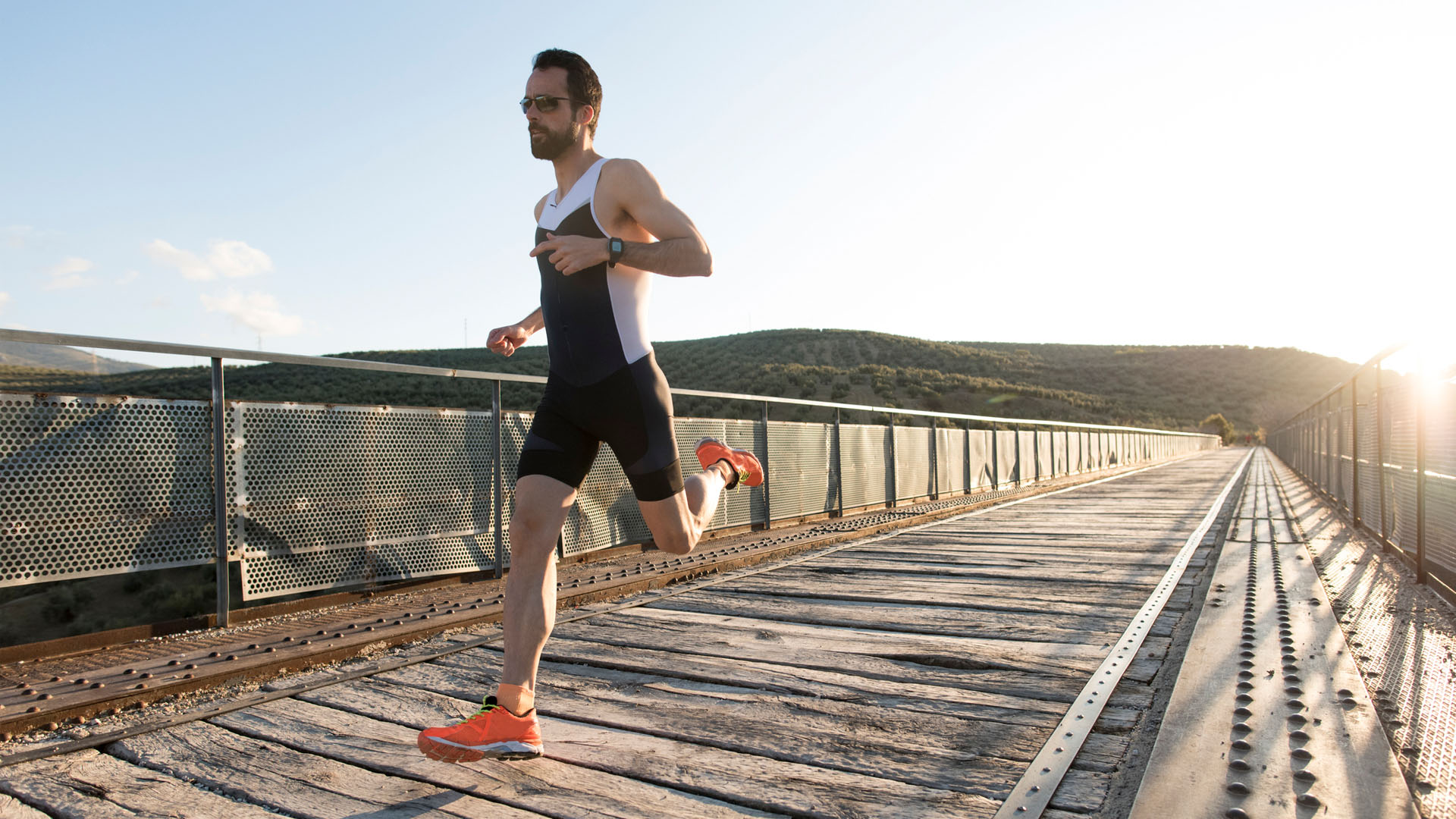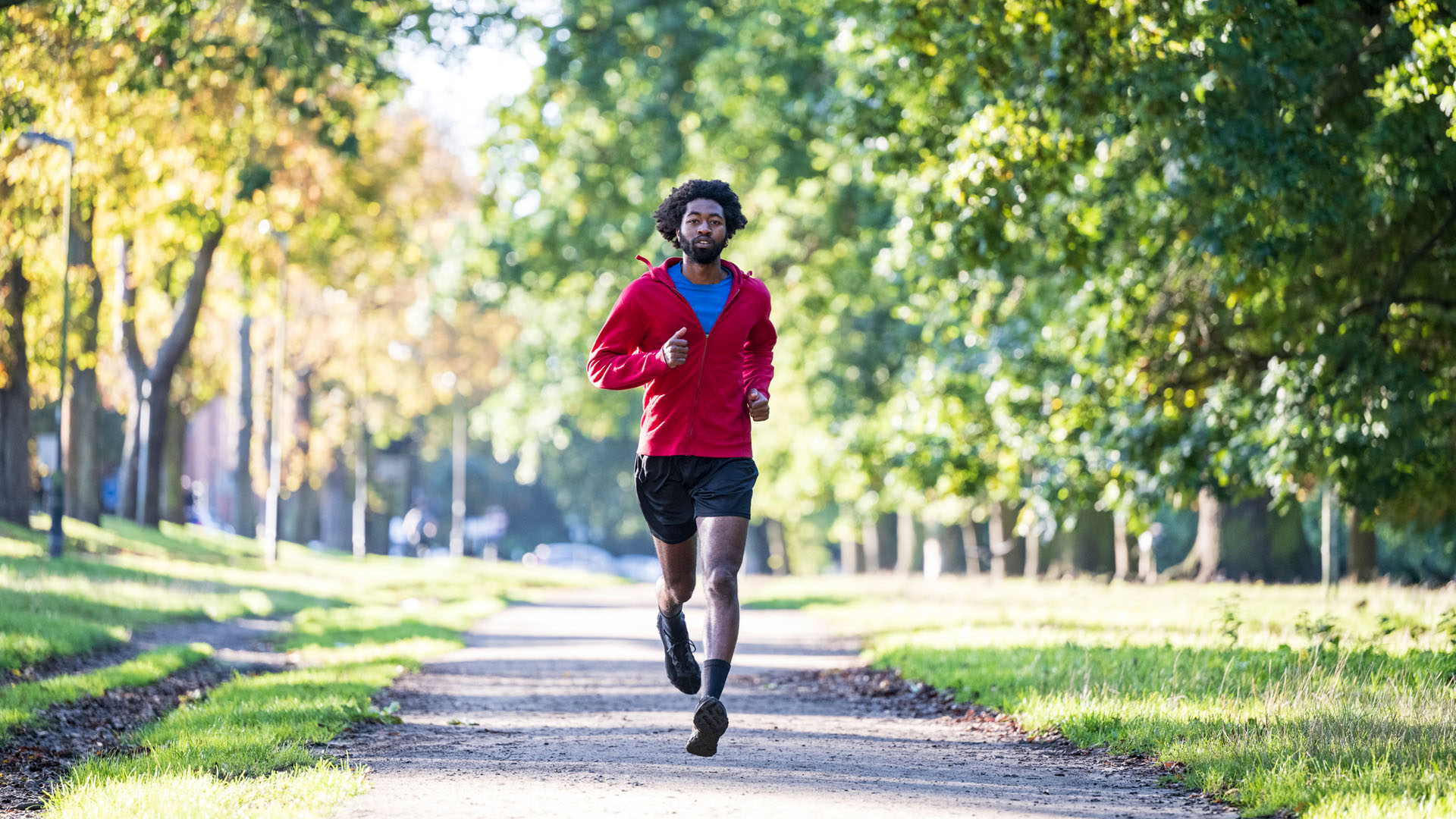What is cadence in running and why is it important?
From step rates to stride lengths, here’s everything you need to know about cadence in running.

From sprinting to long distance, the body uses a lot of energy during running and eventually becomes fatigued.
How often the feet hit the ground and at what angle can not only improve running efficiency, but potentially help prevent injury too. This is known as cadence — something that many of the best running watches now have the ability to track.
But what cadence is best? And is it possible for someone to change their running cadence? We looked at the science.
What is cadence?
Cadence refers to how many times a person’s feet strike the ground in one minute. It is also known as foot turnover, foot strikes, step frequency or step rate, and it measures both the left and right feet. In comparison, a stride is calculated on just one side and refers to the length of a step.
"Cadence is really just the frequency of how fast we are striking the ground with our feet," said John Mercer, a professor of kinesiology and nutrition at the University of Nevada. A low cadence means someone is taking fewer steps per minute (spm), while a high cadence means more frequent steps.

John Mercer is a professor in the Department of Kinesiology and Nutrition Sciences at the University of Nevada, Las Vegas. Mercer’s research emphasis is on human locomotion and sport performance. He has a focused line of research on biomechanical and physiological responses while running to understand factors that drive running style, influence performance and minimize risk of overuse injury.
Cadence can impact stride too. In a 2014 study in the Journal of Sports Science, runners increased their cadence by 10%, finding that it subsequently decreased their stride length.
Why is cadence important in running?
Sports scientists have long been studying the best way to run that uses the least amount of energy and the least amount of oxygen. Part of this puzzle is understanding the impact of cadence in running.
"From a physiological perspective, cadence tells us what's happening internally and how to be the most effective and efficient runner,” Mercer told Live Science.
Having a high cadence is important for sprinting because it enables someone to run faster. However, it is still important for distance running too.
"You're trying to manage the impact that you're taking with each stride when running at distance, while at the same time trying to operate in this optimum range to use the least amount of energy to cover [that] distance," Mercer said.

Whilst sprinters may rely on a longer stride together with a high cadence, endurance runners are often advised to maintain a short stride but high cadence to avoid landing with their feet too far in front of their hips or knees — known as overstriding. Overstriding can be more impactful on the joints and may lead to injury.
"We tend to hit the ground with more of the rear foot when we take a [lower cadence] and a longer stride length,” Mercer said. “As we shorten that up [increasing cadence], we may hit more mid foot.”
A 2011 study published in the journal Medicine and Science in Sports and Exercise found that increasing cadence decreased impact load on the lower body. The findings indicated that a 10% increase in cadence substantially reduced energy absorption at the hip and knee, while a 5% increase reduced the total work performed at the knee. Having a lower impact load could mean a lower risk of overuse injuries such as runner's knee, the researchers concluded.
Every person has a natural running cadence, Mercer said, and although it can be difficult to change, it is possible. “In most cases, if runners are going to change their cadence they will most likely need to increase it rather than decrease it,” he said.
Is there an optimum cadence?
The figure often touted for optimal running efficiency is 180 spm, based on a key study conducted on Olympic distance runners and published in “Daniels' Running Formula” (Human Kinetics, 2005).
A study of 20 elite runners competing in a 100k road race, published in the Journal of Applied Physiology, also found the average cadence to be 182 spm. However, there were big variation between competitors, ranging from 155 to 203 spm. The fastest speeds were associated with the greater step frequencies.
Competitive distance runners tend to maintain a cadence between 170 and 180 spm, whilst recreational runners tend to range between 156 to 170 spm, according to a 2015 study published in The Journal of Experimental Biology.
Ultimately, Mercer said, runners will have their own optimal cadence range which will vary depending on running conditions, as well as factors such as age and height. So while making tweaks to running cadence may improve efficiency and reduce injury risk, there is still a degree of personalization involved.
Sign up for the Live Science daily newsletter now
Get the world’s most fascinating discoveries delivered straight to your inbox.
Lily Canter is a freelance money, health and lifestyle journalist with more than 20 years' experience. She writes about fitness for Fit+Well, Tom's Guide, T3, South China Morning Post, Runner's World and Trail Running magazine. She focuses on personal finance for Yahoo! Finance UK, Metro, The Guardian, and loveMONEY. In her spare time she is an ultra-runner, canicrosser and UK Athletics running coach. She also co-hosts the award-winning podcast Freelancing for Journalists.











